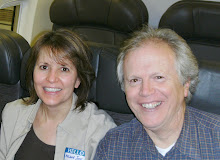We benefited greatly from having knowledgeable people to guide us. They help us adapt to and avoid pitfalls in our treatment of the Haitian people.
Scott Nelson, M.D.
I admit it. I posed Scott for this picture, but I didn't have to work very hard in posing him. Scott had been in Haiti since two days after the quake (a week before we got there) and operating with very little rest. He has been visiting Haiti once a quarter for the last five years from the CURE hospital in Santo Domingo. His team from CURE was one of the first to enter after the quake. With his experience and his presence on the ground he was able to direct both the CURE group and the Loma Linda University group in planning for the trip. See the CURE blog above left.
Kaye Wilkins, M.D.
Simply the most productive member of our team, Kaye was tireless in his efforts to improve our efficiency. Kaye has previously visited Haiti and taught pediatric orthopaedics. In our OR he plowed into what I had thought was just a room full of abandoned equipment. In the course of organizing the room he found many useful tools including a dermatome with brand new blades. In the picture above he has just reorganized our cast room. He also payed a visit to our warehouse.
Kaye Wilkins, M.D. and Charles Sandefur president of ADRA
Charles Sandefur, the president of the Adventist Development and Relief Agency, was in Haiti to help with ADRA's efforts to relieve suffering.
Arrival of Haitian-American nurses; departure of LLU team
As you might imagine the arrival of American nurses who had grown up in Haiti was an enourmous help. I am only sorry that we got to work with them for such a short period of time.
